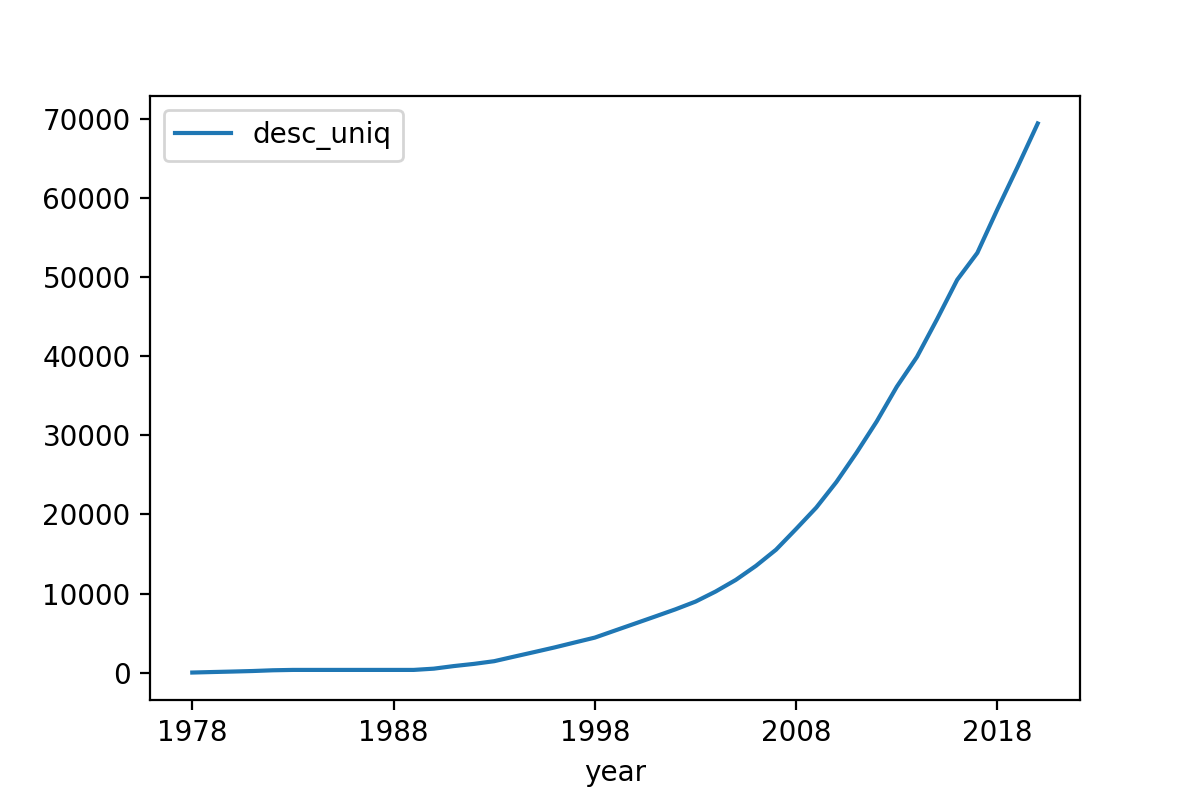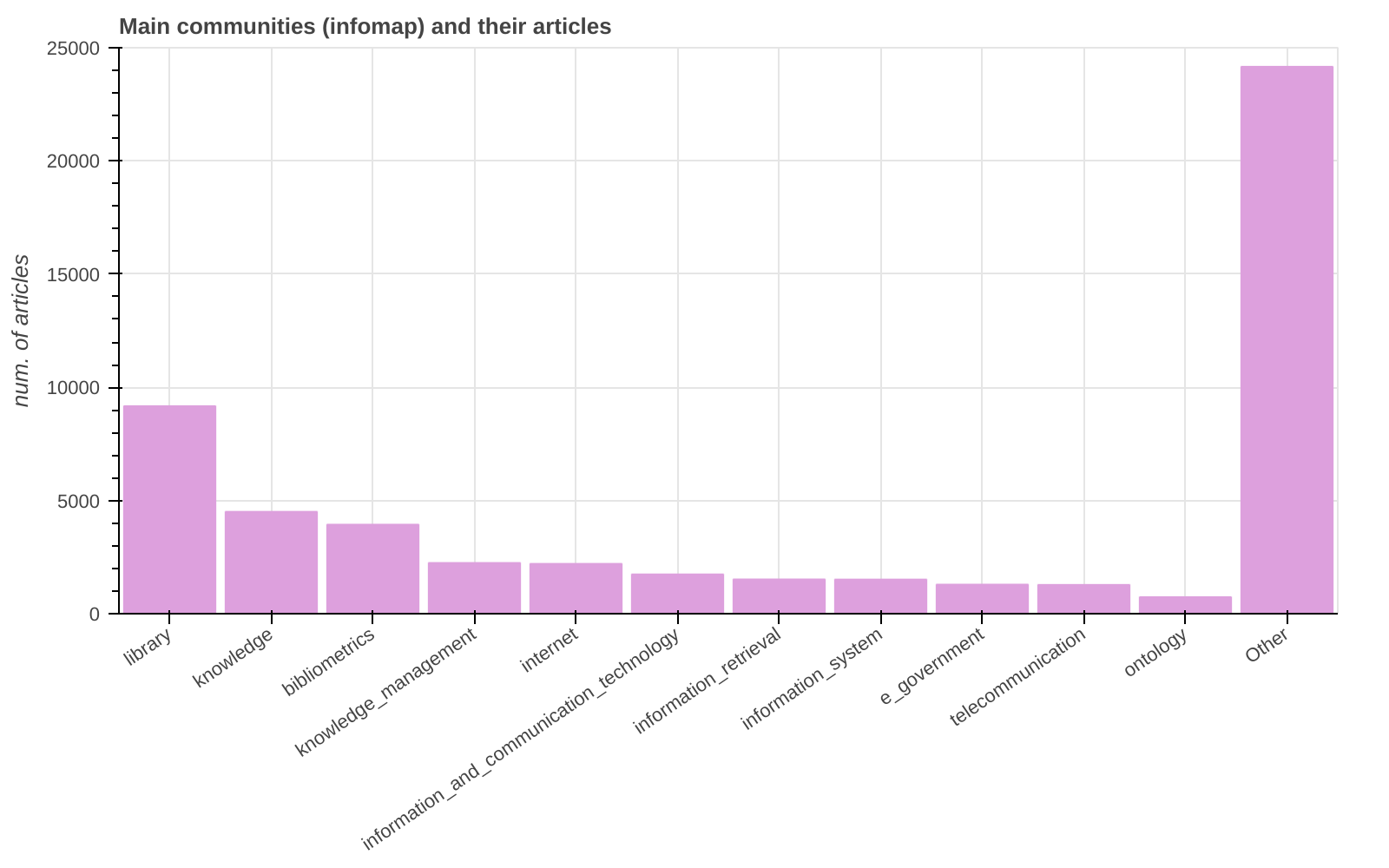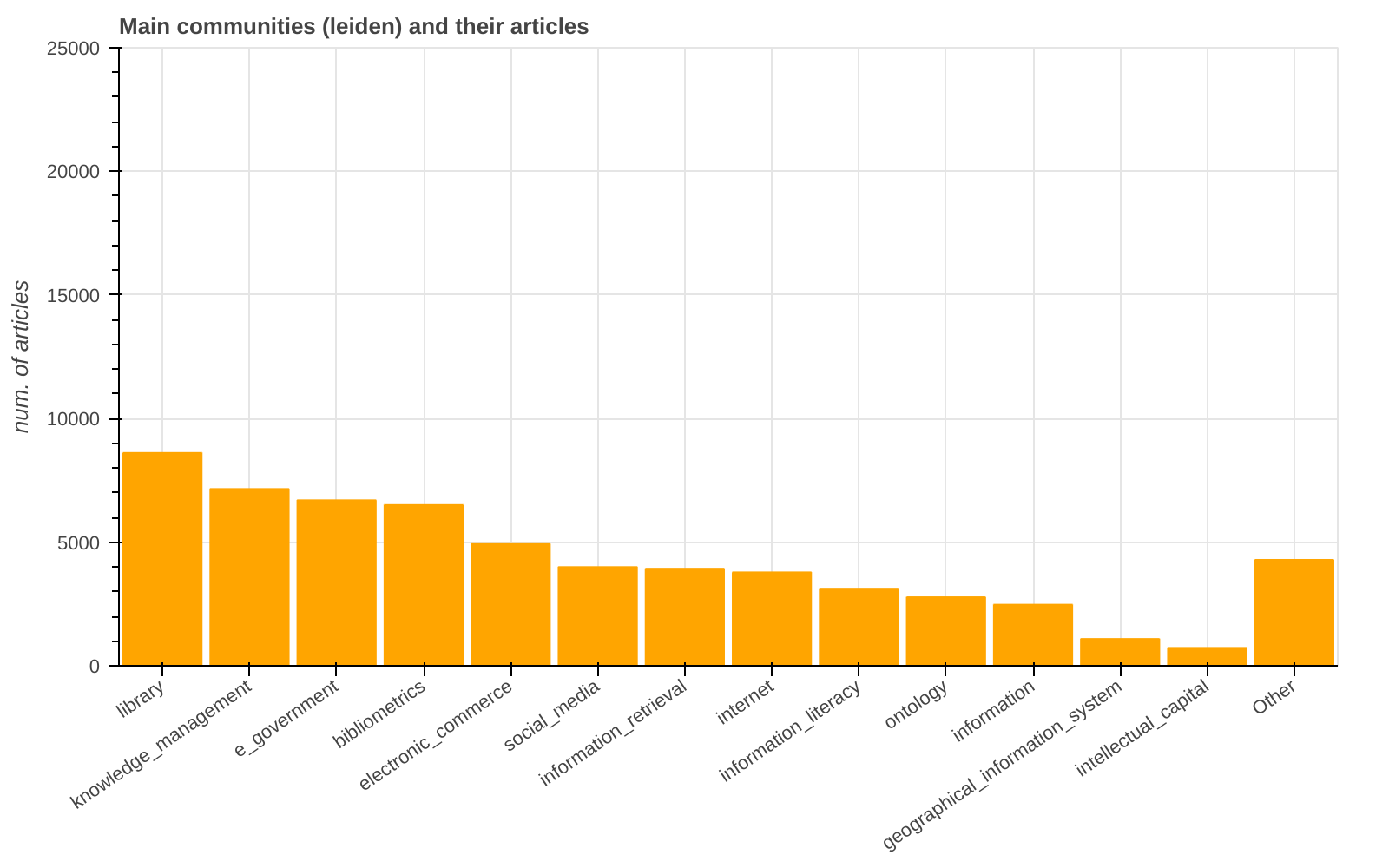Networks of keywords for the bibliometric analysis
EUSN 2021
Carlos G. Figuerola [figue@usal.es]
Modesto Escobar [modesto@usal.es]
University of Salamanca, 2021
Author’s keywords
- authors describe the content of their academic articles
- they are free vocabulary
- no constraints
- even no normalization
- very wide range of words (most of them with only one use)
Author’s keywords
- low utility for retrieval pourposes
- most of author’s keywords occur also inside the title and/or the abstract
- journals often include another subject headings, topic classification, etc.
- current retrieval technology performs better than searching by such author’s keywords
Author’s keywords
- however
- keywords give a good idea about how authors themselves see their own work
- as keywords connect (co occur) each other, they can show how authors are related with another diciplines, knowledge subfields, etc.
- as science fields are not monolithic, and academic articles are stored in bibliographic databases, keywords analysis can show byass or different ways of view specific disciplines.
Data Source
- bibliographic records from Web of Science
- all records in the Library & Information Science category
- from 1971 to 2020
Data overview
- number of records: 114,020
- records with author’s keywords: 42,838

Data overview
- total of keywords: 228,420
- unique keywords: 62,550
- average keywords per article: 5.34

Most frequent keywords
| internet |
1092 |
|
social_network |
483 |
| social_media |
1048 |
|
information_system |
482 |
| knowledge_management |
1034 |
|
knowledge_sharing |
481 |
| bibliometrics |
927 |
|
innovation |
457 |
| information_retrieval |
896 |
|
china |
457 |
| academic_library |
834 |
|
trust |
429 |
| library |
716 |
|
information_and_communication_technology |
426 |
| information_technology |
571 |
|
collaboration |
425 |
| digital_library |
553 |
|
electronic_commerce |
412 |
| citation_analysis |
552 |
|
e_government |
403 |
| information_literacy |
535 |
|
research |
390 |
| qualitative |
512 |
|
public_library |
368 |
| case_study |
489 |
|
|
|
Most frequent keywords over time

Network of keywords
- keywords can be represented by a network in which:
- every keyword is a node
- nodes are connected if they cooccur in the same article
- weigth of connection (edges) is proportional to the frequency of the coincidence
- edges are not directed
Network of keywords
- resulting network is pretty big
- 62,550 nodes
- 260,788 edges
- network can be pruned dropping nodes with degree <= n
- with n=2
Infomap

Leiden

Main Communities
- library digital_library academic_library interlending worldwide_web document_delivery electronic_book
- knowledge_management knowledge information_system knowledge_sharin case_study outsourcing knowledge_transfer
- e_government information_technology information_and_communication_technology telecommunication digital_divide broadband
- bibliometrics citation_analysis citation h_index open_access research impact_factor
- electronic_commerce trust privacy technology_acceptance_model culture ethic security supply_chain
- social_media web_2.0 social_network collaboration network blog facebook twitter
- information_retrieval search_engine user_interface world_wide_web user design precision text_mining
- internet cd_rom web_survey standard computer_mediated_communication expert_system online_searching
- information_literacy e_learning education multimedia training learning information_seeking distance_learning
- ontology metadata evaluation semantic_web classification quality preservation
- information implementation decision_support_system enterprise_resource_planning_system information_quality
- geographical_information_system open_source_software data software_development uncertainty digital_elevation_model map
- intellectual_capital data_mining business_intelligence decision_support data_warehouse real_option
Conclusions
- network analysis techniques can help in bibliometrics studies
- network of author’s keywords can be useful for analizing thematic development of scientific disciplines
- community structure of a network of keywords can show the topic’s structure of a scientific field
- dynamic networks can be useful to analize the evolution over time of topics inside a scientific discipline
Thank you !!
figue@usal.es




